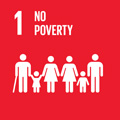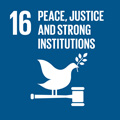- Docente: Michela Ceccorulli
- Credits: 8
- SSD: SPS/04
- Language: English
- Teaching Mode: Traditional lectures
- Campus: Forli
-
Corso:
Second cycle degree programme (LM) in
International relations and diplomatic affairs (cod. 6058)
Also valid for Second cycle degree programme (LM) in International Politics and Economics (cod. 5702)
Second cycle degree programme (LM) in East European and Eurasian Studies (cod. 5911)
Second cycle degree programme (LM) in International Relations and Diplomatic Affairs (cod. 9247)
-
from Feb 18, 2025 to May 13, 2025
Learning outcomes
The aim of this Course is to provide students with analytical skills to assess, research and critically debate the political dimensions of international migrations. At the end of the Course the student is expected to know the layers of governance of the issue at the regional and global level; to acknowledge the main challenges key actors identify with respect to the phenomenon and to be aware of the main resistances to the creation of an effective and efficient governance of the phenomenon.
Course contents
The course is organized in lectures and seminars, as detailed in the following program. Lectures aim to introduce students to the discipline's core tenets. Seminars aim to provide occasions for in-depth discussions of class material and exercises. Students are invited to brainstorm and identify key and workable research questions, to get used to teamwork and pull their weight. They are also required to carefully read the assigned material before the session and - in the case of seminars - active participation through presentations of existing scholarship and case studies is also expected.
The programme is quite dense and requires full dedication by enrolled Students. Students are expected to read the material in the Syllabus ahead of classes, following the Professor’s instructions. No specific schedule is provided as Classes may vary according to need.
Readings/Bibliography
MIGRATION: CONCEPTS AND THEORIES
Migration, a global phenomenon
De Haas, H., Castles, S. and Miller, M. (2020), ‘Introduction’ and ‘Categories of Migration’, in The Age of Migration, 6th Edition, pp. 1-14; 19-20; 21-41.
Zolberg, A. (2006), Managing a World on the Move, Population and Development Review, 32, pp. 222-253.
Triandafyllidou, A., Bivand, Erdal M., Marchetti, S., Raghuram, P., Mencutek, Z., Salamońska, J., Scholten, P. and Vintila, D. (2023) Rethinking Migration Studies for 2050, Journal of Immigrant & Refugee Studies, DOI: 10.1080/15562948.2023.2289116 [https://doi-org.ezproxy.unibo.it/10.1080/15562948.2023.2289116]
Data and statistics:
MPI, International Migration Statistics, available here: Migration Data Hub | migrationpolicy.org [https://www.migrationpolicy.org/programs/migration-data-hub?qt-data_hub_tabs=1#datahub-tabs]
UNHCR (2024), Mid-year Trends: Mid-Year Trends | UNHCR [https://www.unhcr.org/mid-year-trends]
European Council, Infographics, available at: Infographics - Consilium (europa.eu) [https://www.consilium.europa.eu/en/infographics/]
IOM, Missing migrants project. At: International Organization for Migration (iom.int) [https://missingmigrants.iom.int/]
Actors and layers of governance
Betts, A. and Kainz, L. (2020), Power and proliferation: Explaining the fragmentation of global migration governance, Migration Studies, pp. 1-25.
Betts, A. and Milner, J. (2019), Governance of the Global Refugee Regime, World Refugee Council Research Paper 13, May 2019.
Hattem, J. (2024), Is the Humanitarian Protection System Falling Apart or Quietly Evolving?, MPI, available at: Article: Is the Humanitarian Protection System Fal.. | migrationpolicy.org [https://www.migrationpolicy.org/article/humanitarian-protection-evolution]Fine, S. and Pécoud, A. (2018), International Organizations and the multi-level governance of migration, in A. Triandafyllidou (ed), Handbook of Migration and Globalization, Edward Elgar Publishing, Ch. 3.
Suggested reading
Sandra Lavenex, The International Refugee Regime and the Liberal International Order: Dialectics of Contestation, Global Studies Quarterly, Volume 4, Issue 2, April 2024.
Migration and International Relations
Hollifield, J. F. (2004), The Emerging Migration State, The International Migration Review, 38, 3, pp. 885-912.
Adamson, F. B., Chung, E.A. and Hollifield, J. F. (2023) Rethinking the migration state: historicising, decolonising, and disaggregating, Journal of Ethnic and Migration Studies, DOI: 10.1080/1369183X.2023.2269769 [https://doi-org.ezproxy.unibo.it/10.1080/1369183X.2023.2269769]
Hollifield, J. F. (2012), Migration and International Relations, in Rosenblum Marc R. and Tichenor Daniel J. (eds), Oxford Handbook of the Politics of International Migration, Oxford, Oxford University Press.
Betts, A. and Loescher, G. (2011), Refugees in International Relations, in Betts, A. and Loescher, G., (eds), Refugees in International Relations, Oxford, Oxford University Press, Introduction.
Migration, foreign policy and migration diplomacy
Teitelbaum, M. (1984), Immigration, refugees, and foreign policy, International Organization, 38(3), 429-450.
Adamson, F. B. (2016). The Growing Importance of Diaspora Politics. Current History, 115(784), 291–297. https://doi.org/10.1525/CURH.2016.115.784.291
Tsourapas, G. (2017), Migration Diplomacy in the Global South: cooperation, coercion and issue linkage in Gaddafi’s Libya, Third World Quarterly 38, 10, 2367-2385.
Greenhill, K. M. (2010), ‘Introduction’, in Weapons of mass migration. Forced displacement, coercion, and foreign policy, Cornell University Press, Ithaca and London.
Fiona B Adamson, Kelly M Greenhill, Deal-making, diplomacy and transactional forced migration, International Affairs, Volume 99, Issue 2, March 2023, Pages 707–725.
Suggested reading
Fernández-Molina, I., & Tsourapas, G. (2024). Understanding migration power in international studies. International Affairs.
The external dimension of migration
Garlick, M. and Feith, T. (2024), Moving beyond Externalisation? Towards lawful cooperation on asylum, available at: Moving beyond externalisation? Toward lawful cooperation on asylum - Externalizing Asylum [https://externalizingasylum.info/moving-beyond-externalisation-toward-lawful-cooperation-on-asylum/]
Castles, S. (2004). Why migration policies fail. Ethnic and Racial Studies, 27(2), 205–227.
MIGRATION AND THE EU
Migration/asylum policies in the EU
Guiraudon, V. (2020), 20 Years after Tampere’s Agenda on “Illegal Migration”: Policy Continuity in Spite of Unintended Consequences’, in Carrera, S., Curtin, D. and Geddes, A. (eds), 20 Years Anniversary of the Tampere Programme, EUI.
Sanchez, G. (2020), Who is a Smuggler, in Carrera, S., Curtin, D. and Geddes, A. (eds), 20 Years Anniversary of the Tampere Programme, EUI.
The 2015 refugee crisis
Bauböck, R. (2018), Refugee Protection and Burden Sharing in the European Union, Journal of Common Market Studies, 56, 1, 141-156.
Dingott Alkopher, T. (2018). Socio-psychological reactions in the EU to immigration: from regaining ontological security to desecuritisation. European Security, 27(3), 314–335.
Ceccorulli, M., (2019) Back to Schengen: the collective securitisation of the EU free-border area, West European Politics, 42, 2, 302-322, available online
2nd PART
(N.B. Readings are intended as preparatory materials for activities to be played in class)
LECTURE with GUEST (8 April)
Wolff, S. (2024) The New Pact on Migration: Embedded Illiberalism?. JCMS: Journal of Common Market Studies, 62: 113–123.
European Union, Questions and Answers on the Pact on Migration and Asylum: https://home-affairs.ec.europa.eu/policies/migration-and-asylum/pact-migration-and-asylum/questions-and-answers-pact-migration-and-asylum_en
Migration and security
Huysmans, Jef and Squire, Vicki (2009). Migration and Security. In: Dunn Cavelty, Myriam and Mauer, Victor eds. Handbook of Security Studies. London, UK: Routledge.
Browning, C.S. (2017), Security and migration: a conceptual exploration, in Bourbeau, P. (ed), Migration and Security, Cheltenham; Edward Elgar Publishing, pp. 39-59.
Class activity
The EU and the external dimension of migration
Council of the European Union (2023), From a reactive to a preventive model – Discussion paper, Brussels, 26 September.
Hill, C. (2023), Migration: the Dilemma of External relations, in C. Hill, M. Smith and S. Vanhoonacker, eds, International Relations and the European Union, Oxford University Press, pp. 327-351.
Niemann, A. and Zaun, N. (2023) Introduction: EU external migration policy and EU migration governance: introduction, Journal of Ethnic and Migration Studies, 49, 12, 2965-2985.
Class activity
Migration and political elections
Grindheim, J.E. (2019), Why Right-Leaning Populism has Grown in the Most Advanced Liberal Democracies of Europe. The Political Quarterly, 90: 757-771. Available here: Why Right‐Leaning Populism has Grown in the Most Advanced Liberal Democracies of Europe - Grindheim - 2019 - The Political Quarterly - Wiley Online Library [https://onlinelibrary.wiley.com/doi/full/10.1111/1467-923X.12765]
Class activities
Crises, wars and displacement (two Classes)
The Class explores the relation between ‘migration’ and ‘crises’ exploring recent events.
Class activities
Readings assigned can be easily found on the web. Books chapters are instead available at the Forlì ‘R. Ruffilli’ Library and on Virtuale. All Students should be registered in ‘Virtuale’ to be considered as attending students
Teaching methods
Lectures; Class - debates; Seminars; Class-activities; presentations
Assessment methods
The Course is part of the IPM/IPE Programme. Be sure to consult instructions on attendance. 'Non-attending student' modality is not offered for this Course.
1). Participation - for this Course, students' active engagement is strongly recommended and will be part of the grading system according to the modality explained during classes.
2). Class presentation -more info in class
3). Final written exam (13 May)
More details will be provided in Class.
Teaching tools
Powerpoints, articles, simulations, video projection
Office hours
See the website of Michela Ceccorulli
SDGs



This teaching activity contributes to the achievement of the Sustainable Development Goals of the UN 2030 Agenda.
